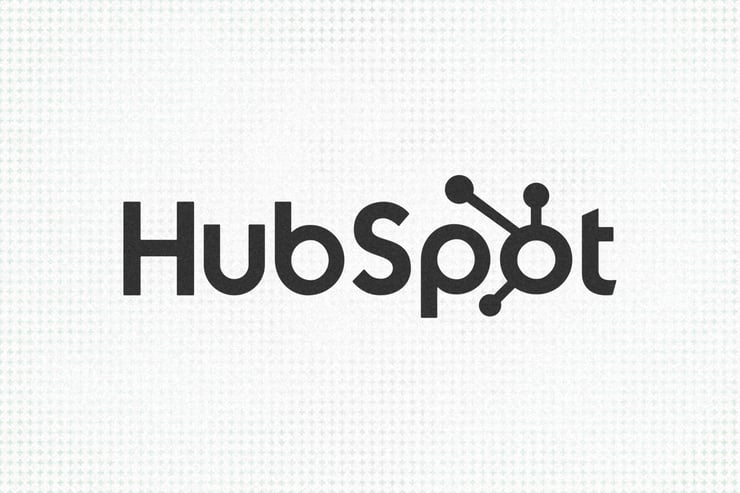CMS Roundup 2022: From Hosted to Headless
Picking the right CMS for your organization’s website is a more important decision than ever, especially with the incredible amount of options available in 2022. As the web has matured, so have the content management needs of marketing and business development teams. Gone are the days of minimal, unattractive, and confusing collections of fields for updating text and images in a rigid design; some content editors need to be able to create multi-channel content, and others to make structural changes like adding and removing sections and on their site without the help of a developer.
In this post, we will break down, in detail, the best options for each main category of CMSs on the market today: Open-source, Headless, and Premium.
Jump straight to our top recommendations: Wordpress, Contentful, and HubSpot.
Open Source
When it comes to cost and customization, you can’t beat open source CMS products. Open source software is a term for projects that are developed by a “community” and licensed not only for free use, but the code is also publicly available for modification or contribution. This means that, if you have a developer that knows what they are doing, they can make these applications do almost anything your site may need. Additionally, CMS options in this category are some of the most popular on the web today for these reasons, bringing with them an almost incomprehensible amount of plugins, themes, and other extensions for common use-cases.
However, there are certainly drawbacks to these types of CMS applications as well, firstly that only the application itself is “free,” and it is up to your team to handle hosting, security, installation, and maintenance on your own and on your budget. Hosting can cost anywhere from $5 per month to thousands depending on your configuration and needs, and if your team does not have deep technical talent or IT resources, you run the risk that your developer or consultant may configure your site according to their preferences rather than the best interest of your organization. For example, many developers that work on these platforms have custom-built “boilerplates” or starter code for their website projects which allow them to work more quickly and efficiently, but at the cost of cross-developer compatibility. This means if you want to give your site a facelift a few years down the road, you will either have to work with the same developers or often start entirely from scratch on a full redesign rather than simply building on the existing foundation.
Open Source Pros:
- Free software
- Extremely flexible and customizable by developers
- Large number of themes, plugins, widgets and more
- Large communities of users to help solve common problems
- Easy to find a wide range of development partners from affordable to premium
Open Source Cons:
- Lack of first-party support
- You can’t call Wordpress if something isn’t working on your site
- Hosting, installation, security, and ongoing maintenance must be handled by your team
- A “cobbled together” ecosystem of themes, plugins, and other assets that may or may not continue to work together over time
- Increased customizability also means more complicated and expensive migrations and redesigns down the road when compared to more opinionated systems
- Most applications are built as publication applications first, such as blogs or online magazines, as opposed to purpose-built marketing website software
The Best Open Source CMS Options
1. Wordpress
Wordpress is the most popular CMS not only in this category, but on the entire internet. According to some article somewhere, Wordpress-powered websites consist of about 40% of all sites online. If you’re reading this post, there’s a good chance you’ve used a Wordpress site before... and that experience may or may not come with some battle scars.
Of course Wordpress is popular for many reasons: it’s free, on a reliable architecture with a long track record (PHP + MySQL) and has built up a huge ecosystem of themes, plugins, and other add-ons to meet almost every use-case. From ecommerce, to membership sites, to multi-site environments, if you can do it online you can probably do it with Wordpress. Many marketing automation platforms even offer native integrations with Wordpress through their own plugins. So why use anything else?
There are two main drawbacks to using Wordpress: its architecture and its popularity. Because Wordpress is open-source, incredibly popular, and database-driven, it is also one of the most vulnerable to getting hacked without the proper precautions. Go to almost any of your favorite sites running Wordpress and append “/wp-admin” to the end of the URL and there’s a good chance you will reach a login screen. This address can then be used by a bot or script to try various combinations and try to brute-force into your site’s admin area. This method of hacking has fallen out of favor in recent years, but that this address is present by default illustrates that some of Wordpress’ core functions, which have been exploited for years, are still present by default. This is due in large part to Wordpress never being originally designed as a “website editor” in the first place.
When Wordpress was originally released, it was built in the early days of the Web 2.0 movement (2003) and was a major player in the blogging ecosystem. At that point in time, almost all websites were hard-coded with fairly simple layouts and a blogging CMS gave writers a flexible area of the site where they could write and publish articles without a developer, but those articles were almost always a simple mix of text and images. This editing style is still at the core of Wordpress in most installs, with the “classic editor” plugin being one of the most popular plugins available. However, because Wordpress was free and open-source, a plethora of different editing plugins were written that extended its capabilities beyond simple post editing and into full webpage management over the years. Some examples of these plugins include Advanced Custom Fields, WP Bakery, Divi, Elementor, and now even Wordpress comes installed by default with their own “Gutenberg” editor.
The big problem with all of these editors are that they are add-ons to Wordpress’ blogging foundation, which also means each experience is a bit disjointed even though all are built on the same platform. This also means that if a site is redesigned, the developers of the new theme will either be forced to use the existing page editor or migrate/rebuild any existing content for the new editing tool.
Finally, there is the maintenance aspect of administering a Wordpress site. As mentioned for all CMS options in this category, there are a number of options when it comes to hosting configurations for Wordpress, from simple and affordable to robust and significant.
The most popular and least expensive option is shared hosting, ranging from $5 to $10 on platforms like Bluehost, GoDaddy, HostGator, NameCheap and more. These packages make it easy and affordable to get up and running, but come with some performance and security compromises inherent with hosting multiple websites on a shared server. Dedicated servers from these companies are a more significant cost to fix some of these issues, but still do not deliver the best possible performance.
Another affordable option is having an expert configure your hosting environment on a service like AWS or DigitalOcean. In this case, the developer or administrator puts in place all the tools your site may need that normally would come with your hosting package, but this also means that person may be the only one who understands the configuration
We recommend if you are building a Wordpress site for your organization that you instead look at managed hosting solutions like WP Engine, Flywheel and Kinsta. These packages cost around $100 per month on average, but come with easy-to-use controls for advanced, industry-standard Wordpress practices like automated daily backups, the use of a CDN, separate development and staging environments with tooling to migrate one to the other, advanced security tools, and perhaps most importantly, dedicated and responsive 24/7 support.
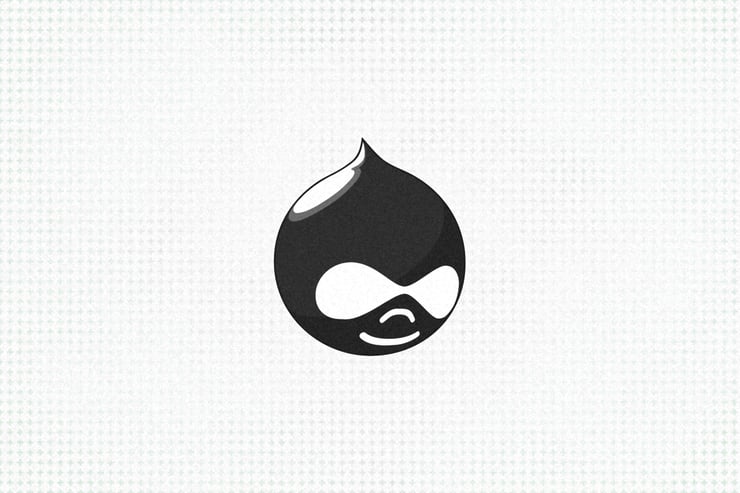
2. Drupal
Our second recommendation in the open-source category is Drupal. Drupal historically has been viewed as the “enterprise” Wordpress, typically used by organizations with significant IT resources. Like Wordpress it has a proven track record and a large ecosystem around it, though not nearly as comprehensive. There are themes and plugins to make it do what you need, especially for marketing purposes, but there is not the same degree of “there’s an app plugin for that” as on our former CMS.
Drupal’s overall marketshare may be dwarfed by Wordpress (40.3% of CMS-driven sites compared to 4.6%), but that smaller footprint does come with a big advantage: security. With Wordpress being the dominant
Drupal is often used by organizations already in an enterprise-level IT ecosystem, like Oracle or Microsoft. It has been around longer than Wordpress, and does offer a few advantages out-of-the-box, such as:
- Granular, individual user permissions system
- Wordpress offers only 5 roles by default, whereas in Drupal permissions can be assigned for each individual user
- Core multi-language support
- This requires a plugin on Wordpress
- Greater taxonomy support and content modeling flexibility
- On Wordpress, everything is a post, and “custom post types” can be made a variety of ways
These advantages naturally lend themselves to larger sites, especially large publications with thousands upon thousands of posts in various forms. Drupals UI, in addition, may not be as pleasing as Wordpress but does keep the content editor focused.
All in all, Drupal is flexible when needed, but is a more opinionated solution for organizations publishing a large amount of content on a regular basis with a larger team.
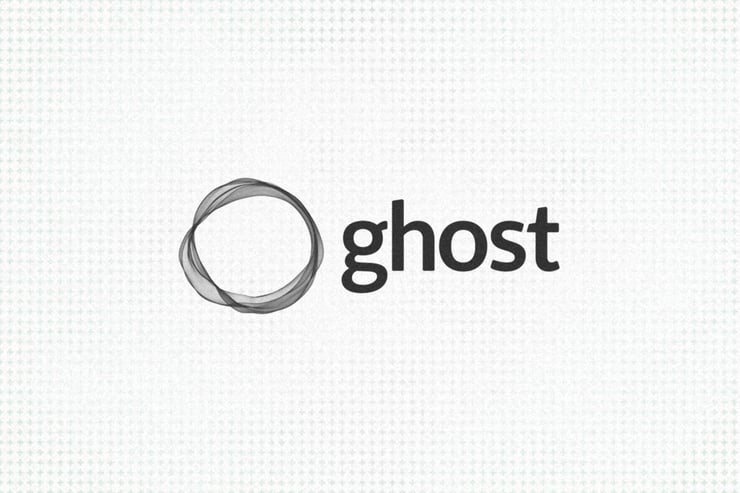
3. Ghost
Ghost is a newer CMS in the open-source, self-hosted space. and it’s obvious just by looking at the UI. Compared to Wordpress and Drupal, Ghost is a breath of fresh air when it comes to both its feature-set and editing controls.
Firstly, Ghost is super easy to get started with, either with the self-hosted option or using a premium hosting package offered from Ghost themselves. With premium, you’re up and running in minutes, and Ghost also offers not only Docker containers for easy deployment from a developer, but also has a partnership with DigitalOcean and Linode to create a self-hosted environment instantly on their platforms.
Once logged in, you’lll see the most modern UI of any applications in this category. Additionally, Ghost comes out-of-the-box with even more marketing-focused features that require paid plugins on Wordpress or Drupal like:
- Built-in SEO tooling
- Most Wordpress sites must install Yoast for this
- Memberships
- On Wordpress your options are buddypress for free or memberpress for ~$200 per year
- Paid subscriptions to monetize or gate your content
Ghost does not have the same ecosystem when it comes to plugin selection or third-party developers, so having a custom theme developed for your organization likely will be pricier compared to the other two options listed in this section, but in terms of content editor experience, Ghost certainly checks a lot of boxes for content-heavy teams.
Honorable Mentions:
Joomla, Concrete, Wagtail, Refinery
Headless CMSs
Headless CMSs have become increasingly popular over the last five years, especially for startups and other tech-heavy agile teams. What is a headless CMS? As opposed to the options we detailed in the last section, Headless CMSs are not website platforms in-and-of themselves. As mentioned above, most of the popular CMS applications on the market now were originally programmed 10+ years ago, and have evolved organically to meet the needs of users on top of that aging foundation. Headless CMSs are a reset in that way: reexamining what a content management system could be rather than has been.
Headless CMSs focus on managing content as their primary goal, not powering websites. When using a headless CMS, you are editing posts, resources, and other “objects” rather than a 1:1 relationship with a page. This allows content editors to focus on their individual pieces of content SEPARATELY from the site itself. That content is then structured and made available in a database for “platform agnostic” publishing, so that content is available both on a website and within an organization’s mobile app, for example.
Headless CMS Pros:
- Security
- A CMS hack or user error will not result in downtime on the website
- Speed
- More flexible content modeling
- Organize your content however your like, without being forced into categories like “posts,” “pages,” or other rigid models
- Most cost-efficient for long-term use
- Many headless offerings come at a premium price, however, they also will have some of the lowest costs when it comes to redesigns and process changes in the future
- Need a redesigned site? Your content editors will never notice, because their tools and database are completely separate.
- Need to collaborate with another team using a different headless CMS? Now there’s no need to onboard them to your instance; they can operate in their tool and your developers can simply add their content as a data source on your site or app
Headless CMS Cons:
- Developer skills required for the actual site
- A headless CMS handles content and only content. In order to get it onto a page, you will need to work with a developer to build your site or app
- This also means any marketing plugins or analytic tools must be installed by the developer
- Missing many standard features from traditional CMSs, such as page or post previews
- Can be expensive to implement for the first time, both in terms of software cost for the CMS itself and developer cost for developing the website and/or app the content will be displayed on
- This is why Headless is a better choice for teams with internal developer talent
The Best Headless CMS Options
NOTE: In addition to our recommendations below, many of the open source options listed above can be used as Headless CMSs via a custom configuration.
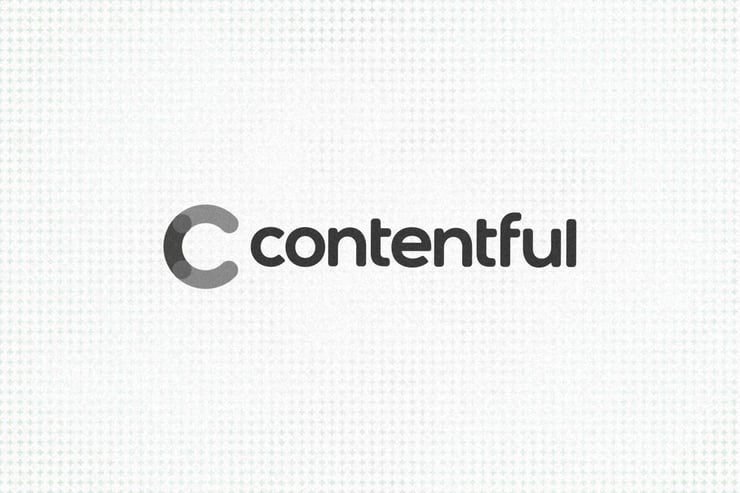
1. Contentful
Contentful is the most popular dedicated Headless CMS on the market today. It is a premium solution for large, highly technical organizations, but offers incredible flexibility and one of the best marketer experiences of any CMS on this list. Content modeling is intuitive and flexible, and offers some premium marketing features such as localized content and contextualization, ecommerce integration, and dedicated documentation and customer support creation tools.
Contentful markets itself as a “Digital Experience Platform” (DXP) rather than a traditional CMS built for managing websites alone. This CMS is built to be used across your organization, from marketing and sales to customer support and success managers. It’s flexible modeling capabilities make it a great solution for managing complex resource libraries that include content of all types.
This functionality does come at a cost, however, as Contentful is a decidedly premium product. While there is a free tier available, their only other tiers are $489 per month or custom enterprise pricing. Further, depending on the size of your team, additional user seats beyond the default 10 for paid packages will be an extra $15 per person per month.

2. Sanity
Sanity is a similar premium offering compared to Contentful, but with an extra emphasis on teamwork and collaboration. In addition to the flexible content modeling and publishing workflow found in Contentful and other Headless offerings, Sanity borrows inspiration from Google Docs when it comes to working with other team members on the same pieces of content. If you’ve ever worked on the same page/post in Wordpress as another team member and accidentally saved over the other person’s changes, you know how frustrating this experience can be.
While Sanity is missing some of the advanced marketing features in Contentful (at least out of the box) it does include some additional features for developers and advanced technical marketers, such as built-in database tools in addition to the traditional content editing UI for faster bulk management of content, a revision workflow tool (which ensures all content goes through an editing/approval check before the content goes live), and automated tools to assist in media management specifically for image storage.
Sanity’s pricing is a bit more flexible than Contentful, but is still significant. As with our former entry there is a free tier, which includes one admin user and 3 non-admin users, one database, seven days of revision history, and a generous amount of free API bandwidth. The next step up is their “team” package at $99 per project (meaning per-brand, so if you are looking to manage multiple sites from one portal this may be an issue), including everything in free plus greater bandwidth limits, thirty day revision history, and an additional 7 non-admin user seats. The “business” tier continues the trend of adding bandwidth, users, and some additional features such as SSO support for larger organizations at $949 per month, and a custom-priced enterprise tier above that.
Sanity is a great choice for heavily-collaborative organizations, where members of multiple teams will all be leveraging the CMS to update and maintain their product at the same time, perhaps looking for a “G-Suite” approach to updating their content.
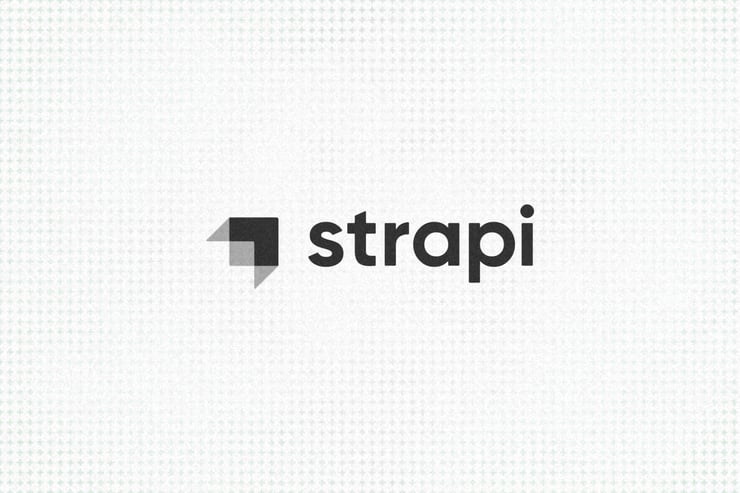
3. Strapi
Looking for a headless CMS that won’t break the bank? Strap in for Strapi (sorry, we had to). Strapi is the leading open-source headless CMS on the market right now, meaning you can download and install it for free on your host of choice. So what makes it different from using Wordpress or Drupal as a headless option?
Strapi, while offering the convenience, flexibility, and cost-savings that come with being open-source, is still a purpose-built headless CMS. Unlike the options mentioned in the open source section, Strapi’s content editing UI and APIs were designed to best serve content editors and developers working in a headless ecosystem.
One of Strapi’s most unique features is the ability to model your content in either repeatable OR one-off objects. This means if you are building a page you can have a marketer-friendly drag-and-drop experience for placing and populating your content fields, and then with the click of a button you can convert that page into a repeatable content template for new pages with the same structure. This is especially powerful for repeatable content objects like eBooks, whitepapers, videos, and other rich media objects.
Perhaps best of all, unlike the other options in this category, Strapi has none of the same limits on content types, users, bandwidth, or other metrics that could incur additional costs. As long as your organization has a resource to install and maintain the server(s) running Strapi, your team can use it to your hearts content with no need to upgrade. Strapi does offer some extra features for a premium cost, such as SSO, customized onboarding to set up some of your content types, more granular user permissions, and dedicated support, but even those packages are very reasonably priced compared to the first two options listed here. Finally, Strapi also has a first-party marketplace and ecosystem for integrations with various other tools that may be in your MarTech stack.
Strapi is a great option for technical teams that are comfortable administering their headless CMS on their own, and is flexible and affordable for organizations of all sizes from startup to enterprise.
Honorable Mentions:
Dato, Prismic, Storyblok, ContentStack, Netlify CMS
Premium CMSs
Premium CMSs is our term for paid, Software as a Service (SaaS) content management systems. In many ways, premium CMSs are the Apple to Open-Source and Headless CMSs Google. These tools are your all-in-one platforms for building a site with minimal to no need for a developer or other technical overhead.
For leaner teams, many of these options mean paying a little bit more for software but avoiding expensive developer or potentially even designer services in order to publish a “launchpad” website that can be improved later. For more mature teams, these platforms put marketers and content editors in the drivers seat when it comes to managing their websites, publishing content, and taking full control over the marketing performance of their online properties.
Finally, one of the biggest advantages to premium CMSs is their structure and long-term value propositions. All of the platforms listed here have comprehensive export tools for potential future migrations of both your website’s data and design, as well as incredible UIs to make editing your site as simple and intuitive as possible. They take care of all security concerns, uptime, and backups, so there’s no need for a dedicated site manager. Many even allow you to buy your domain name directly on the same platform, meaning one less login to manage.
Premium CMSs mean a more resilient, secure, flexible and performant website made to empower your content team to do what they do best.
Premium CMS Pros:
- Built for marketers and content editors to manage websites, not developers or bloggers
- Easy to work with, difficult to break
- Because these platforms are SaaS products, their UI is continually improving to be more user-friendly while also
- Simple, reliable first-party support
- As SaaS applications, most options in this category will have 24/7 support options should any members
- Better-suited for future redesigns and migrations
- Almost all premium CMS options will have export tools to quickly download your website’s data and/or design for republishing on other platforms down the line
- Platform-wide premium performance
- Most of the options in this category will be using the latest methods to technically optimize your website without a developer ever looking at it. Many use industry-leading CDNs (Content Delivery Networks), advanced cacheing practices and other tactics across their platform to make sure pages are as technically optimized both for SEO and user experience.
Premium CMS Cons:
- Often more expensive both in terms of initial implementation and subscription cost than self-managed options
- Less community plugins and less overall flexibility
- Sometimes an organization may want to add something truly unique and/or individual to their site, like an event booking system or an interactive product builder experience. Options for these kinds of custom projects on premium CMSs can be limited and often very expensive, so an open-source CMS may be a better fit.
The Best Premium CMS Options
1. HubSpot
HubSpot CMS is our “goldilocks” CMS of choice. HubSpot is better known as a CRM and marketing automation platform, but their CMS product is not new by any means. While it has gone through a few major iterations, HubSpot has supported full website hosting and content management since 2014.
HubSpot’s CMS Hub has always been unique in the space because it borrows some of the best aspects of other products and repackages them to be as marketer-friendly as possible while also being customizable enough for a developer to implement custom designs and interactive experiences that would otherwise require an open-source alternative. Perhaps most importantly of all, if your organization is already using any other HubSpot tools, they will feel right at home with their website tools in the same portal they are already using.
HubSpot’s focus on marketer experience and the CMS’s place in a MarTech stack also means customers get first-party features not found on any other alternatives. Multi-language functionality, blogging tools, CRM integration, contextualization/”smart content,” live chat, email automation integration, AI-powered SEO tools, an “AirTable-esque” database system, A/B testing options, pop-up CTAs and forms, and built-in video tools are all available without any plugins necessary.
HubSpot’s packages are made to scale as your business does, with a “starter,” “professional,” and “enterprise” option for organizations of various sizes. While the cost does certainly jump significantly between these packages, the starter and professional tiers are incredibly generous in terms of features (this post is written on a “starter” site).
If you’re a growth-focused business looking for a website that will work for your marketers and sales teams, grow with your business, and never want to worry about your site going down or getting hacked, HubSpot CMS might just be your goldilocks too.
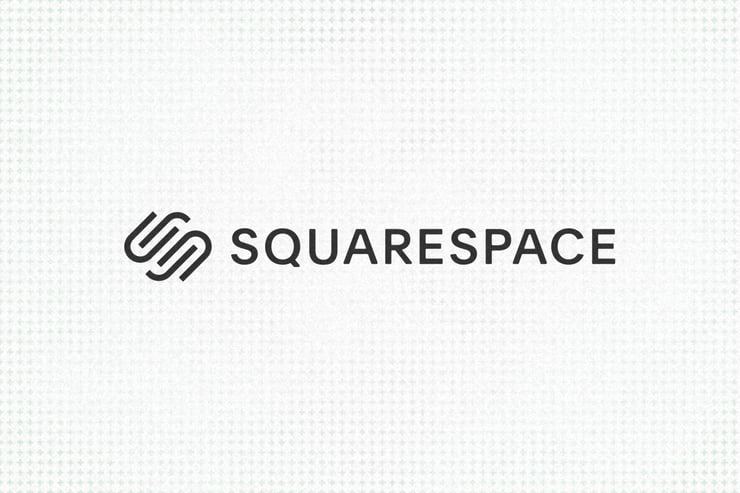
2. SquareSpace
SquareSpace has a reputation as an easy-to-use platform to publish a modern, attractive website easily and quickly, but the advantages don’t stop there. Being a managed platform, SquareSpace also offers levels of security and performance that are very difficult to replicate on “real” websites on open-source platforms. Further, SquareSpace may have started as a relatively simple website builder, but its features have significantly matured to add eCommerce, membership areas, social media integration, promotional pop-ups, and other tools for mature businesses while staying very affordable.
SquareSpace’s themes and templates are very modern, with many taking inspiration from Behance, Dribble and other leading design communities, which can be positive or negative. Brands with a modern aesthetic will feel right at home, but more traditional brands may have to do some digging to find a conversion-focused template that will work for their visual identity.
Once set up, SquareSpace sites can be “set it and forget it” in terms of long-term maintenance, or your editors can be as involved as you’d like with publishing blogs, new pages, or updating existing content without fear of breaking anything.
If you’re a team looking for a simple, affordable website platform that will let you sleep easily at night, SquareSpace is a serious option you should consider.
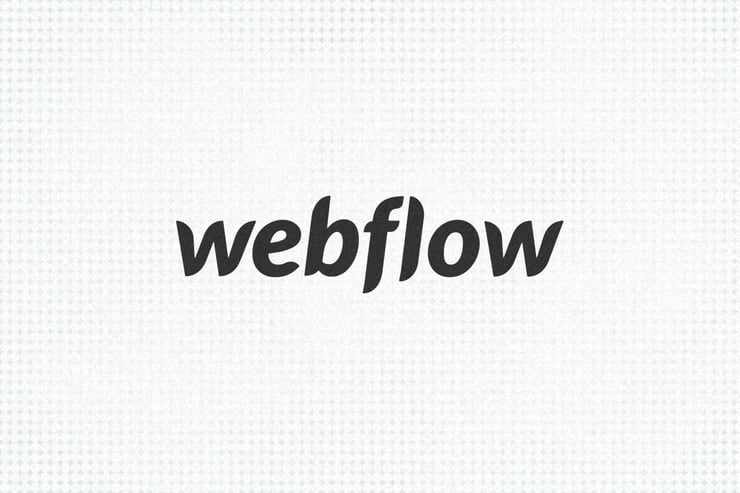
3. WebFlow
Up until this point, this guide has been focused on marketer experience and content marketing needs from a CMS, but what about organizations with internal design talent in addition to marketing talent? Enter WebFlow. WebFlow in many ways is a modern version of the original Adobe Dreamweaver application, a design program that allowed designers to create websites in an interface similar to Photoshop or Illustrator with no developer needed. Putting designers in control of the site not only means a potentially faster time for launch, but also quicker rounds of revision as the site grows with your organization to facilitate new campaigns and content.
WebFlow is seeing especially rapid adoption in the SaaS startup space, and is a perfect fit for organizations that demand cutting-edge design while also remaining agile enough to spin up new pages and sections based on the needs of the organization. Just land a sponsorship booth for a conference at the last minute? A single designer can quickly add a banner or dedicated landing page for attendees without having to involve a full team.
Where WebFlow begins to show some limitations is in dynamic content. The platform does have options for some structured data features like blogs, products, and some content modeling features, but when it comes to things like contextualizing content for users of a certain region/lifecycle stage or integrating "smart" or suggested content based on user bahavior, you're going to be much more limited. Further, while some interactive options are available, these types of experiences are still going to require the assistance of a developer familliar with the product, which leads us to the largest con: cost. While WebFlow is very generous with their "build for free" model which allows you to create your site

